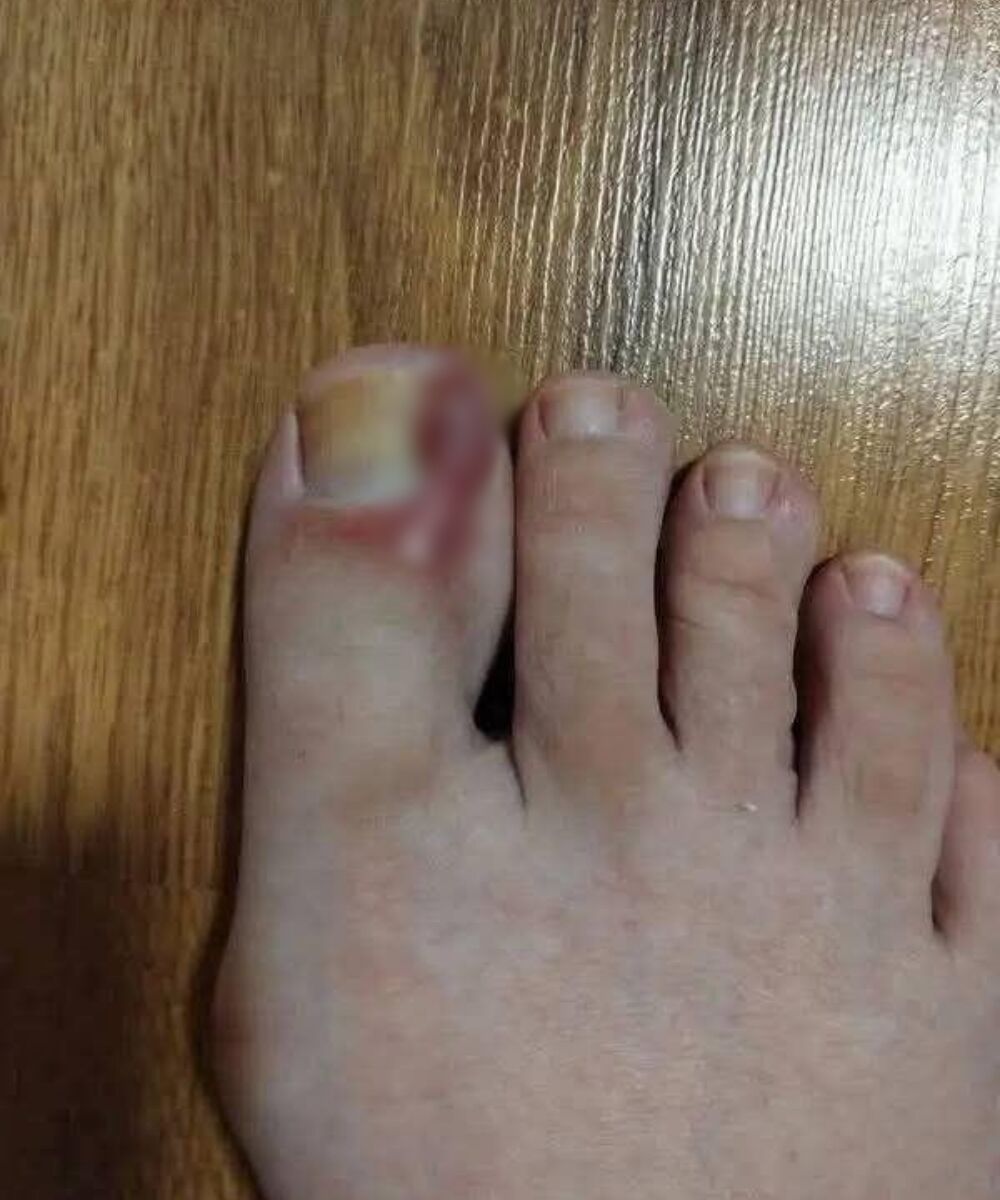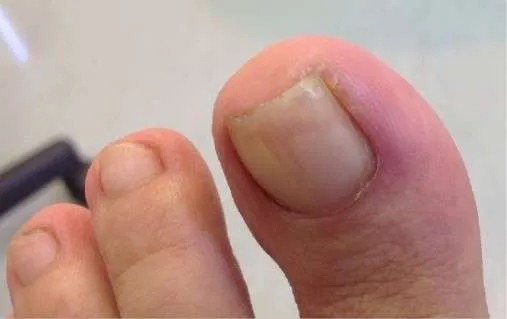
An ingrown toenail occurs when the edge of the nail grows into the skin beside it, leading to pain, swelling, and redness.
If not addressed, it can result in infection. While stubborn or serious cases should be treated by a healthcare professional, minor ones can often be managed at home with straightforward remedies.
Common reasons for developing an ingrown toenail include:
• Wearing shoes that are too tight or narrow
• Trimming toenails too short or rounding the edges
• Injuries to the toe
• Naturally curved nails
• Poor foot hygiene
Signs that you might have an ingrown toenail:
• Tenderness or pain along one or both sides of the nail
• Redness and swelling near the nail
• Warmth in the affected spot
• Pus or fluid drainage, which may signal infection

Home care options for ingrown toenails:
1. Soak the foot in warm salt water
This softens the skin and helps reduce swelling.
Fill a basin with warm water and add one to two tablespoons of Epsom salt.
Soak for 15–20 minutes, two to three times a day.
Pat the foot dry afterward.
2. Gently lift the nail
After soaking, you can try easing the nail edge upward to help it grow over the skin.
Slip a small piece of clean cotton or dental floss under the edge to keep it lifted. Replace daily.
3. Apply an antibiotic ointment
This helps lower the risk of infection.
Spread a thin layer of ointment after each soak.
Cover the area with a clean bandage.
4. Wear shoes that allow space for your toes
Opt for shoes with a wide toe box or open-toed sandals to avoid extra pressure until the nail heals.
5. Try natural soothing options
Tea tree oil: Known for antibacterial effects. Mix a few drops with a carrier oil and apply to the affected area.
Apple cider vinegar: Dilute in water and soak the foot to help reduce bacteria and swelling.
Aloe vera gel: Apply directly to calm irritation.
When to get medical help:
Consult a doctor if pain is intense or worsening, if there is significant pus, swelling, or spreading redness, or if you have conditions like diabetes or poor circulation. You should also see a professional if the problem keeps returning.